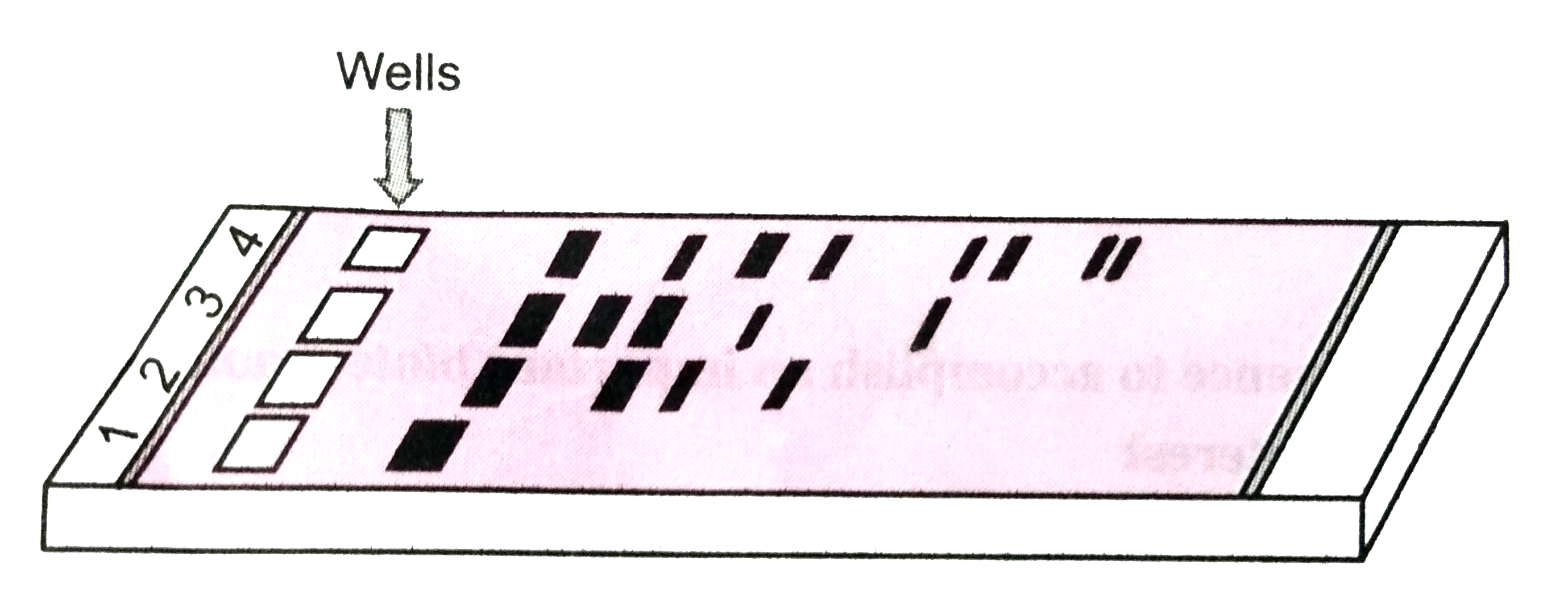Why do DNA fragments move towards the anode during gel electrophoresis ?
DNA fragments are negatively charged molecules and they can be separated by allowing them to move towards the anode during gel electrophoresis.
Topper's Solved these Questions
- BOOK - PRADEEPCHAPTER - BIOTECHNOLOGY: PRINCIPLE'S AND PROCESSESEXERCISE - SHORT ANSWERS QUESTIONS56videos
BIOTECHNOLOGY: PRINCIPLE'S AND PROCESSES
- BOOK - PRADEEPCHAPTER - BIOTECHNOLOGY: PRINCIPLE'S AND PROCESSESEXERCISE - LONG ANSWER QUESTIONS10videos
BIOTECHNOLOGY: PRINCIPLE'S AND PROCESSES
- BOOK - PRADEEPCHAPTER - BIOTECHNOLOGY: PRINCIPLE'S AND PROCESSESEXERCISE - NCERT EXERCISES WITH ANSWERS12videos
BIOTECHNOLOGY: PRINCIPLE'S AND PROCESSES
- BOOK - PRADEEPCHAPTER - BIOTECHNOLOGY AND ITS APPLICATIONS EXERCISE - NCERT EXERCISES PRACTICE QUESTION (II. Assertion Reason Type Question)14videos
BIOTECHNOLOGY AND ITS APPLICATIONS
- BOOK - PRADEEPCHAPTER - ENVIRONMENTAL ISSUESEXERCISE - PRACTICE QUESTIONS (ASSERTION-REASON TYPE QUESTIONS)7videos
ENVIRONMENTAL ISSUES
Similar Questions
a) How do DNA fragments migrate and resolve in a Gel electrophoresis?
b) How lane one is different from lane 2,3 and 4 in the GEL electrophoresis set up?
c) How pure DNA fragments are made observable in the visible light?
 View Solution
View Solutiona) How do DNA fragments migrate and resolve in a Gel electrophoresis?
b) How lane one is different from lane 2,3 and 4 in the GEL electrophoresis set up?
c) How pure DNA fragments are made observable in the visible light?
 View Solution
View Solution
Knowledge Check
- Question 1 - Select One
What is the criterion for DNA fragments movement on agarose gel during gel electrophoresis ?
AThe smaller than fragment size, the farther it movesBPositively charged fragments move to farther endCNegatively charged fragments do not moveDThe larger the fragment size, the farther it moves - Question 2 - Select One
What is the criterion for DNA fragments movement on agarose gel during gel electrophoresis ?
AThe larger the fragment size, the farther it movesBThe smaller the fragment size, the farther it movesCPositively charged fragments move to farther endDNegatively charged fragments do not move - Question 3 - Select One
What is the criterion for DNA fragments movement on agarose gel during gel electrophoresis ?
AThe smaller the fragment size, the farther it movesBPositively charged fragments move of farther endCNegatively charged fragments do not moveDThe larger the fragments size, the farther it moves
What is the criterion for DNA fragments movement on agarose gel during gel electrophoresis ?
View SolutionWhat is the criterion for DNA fragments movement on agarose gel during get electrophoresis
View SolutionWhat is the criterion for DNA fragment movement on agarose gel during gel electrophoesis
View SolutionWhat is the following is correct for the movement of DNA fragments on agarose gel during gel electrophoresis ?
View SolutionSeparation and isolation of DNA fragments can be done by a technique called gel electrophoresis. This technique was developed by :
View Solution

